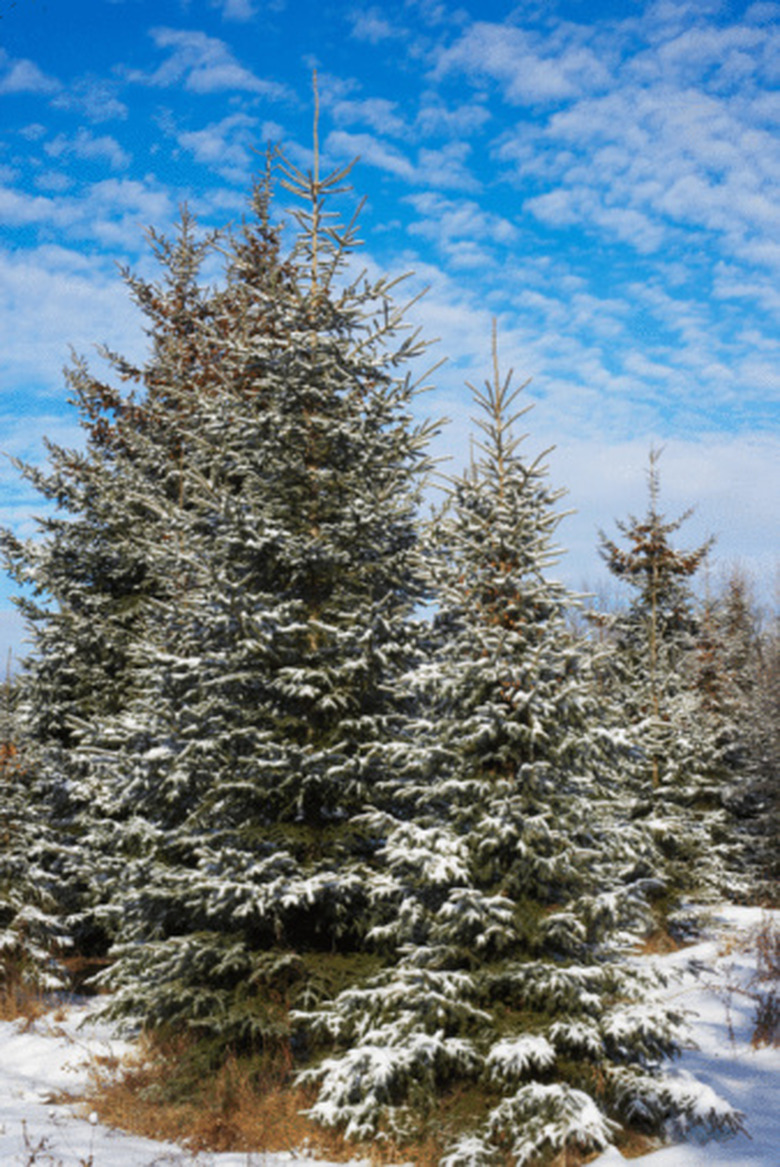Chemicals That Kill Evergreen Trees
While many types of evergreen trees exist, their main characteristic is their intense green color. They maintain this color throughout the entire year, regardless of the season. The color may intensify or dull during periods of drought, heat or cooler weather, but they maintain their green color continuously. Commonly planted for privacy purposes or as a windbreaker during cooler months, evergreens may lose their color and purpose and eventually may die out completely if exposed to certain chemicals.
Fertilizers
Excess fertilizer is damaging to evergreen trees and can result in potentially killing them completely. It is very easy to kill these trees with even the smallest amount of fertilizer, so it is best to avoid fertilizing them when possible. Only when you experience browning or the loss of limbs should you add fertilizer. Avoid planting the trees in fertilizer directly and only sparsely sprinkle the top soil when needed.
Herbicides
Herbicides that are pre-emergent, or used before the growth of weeds occur, can be damaging or fatal to evergreen trees. Discoloration will occur and if the exposure is enough the tree will completely die. Exposure can be direct or can be the result of contact with the pre-emergent fumes generated while spraying. Avoid damaging or killing the evergreen tree by applying the herbicide during times of low wind and high moisture. Dry ground will spread the herbicide many feet while the wind may carry it to the tree.
Sodium
Sodium, or salt, kills evergreen trees when it is present in the soil or when exposed to it. If planted evergreens are near roads that contain snow or ice, salt used to melt it may spread to the trees. The tips of the trees will begin to turn brown and wilt until they die. If purposely removing the evergreen, completely cover the base and surrounding areas with salt and add a gallon of water. The salt in the soil will become absorbed by the tree from the base and roots and will effectively kill it.
